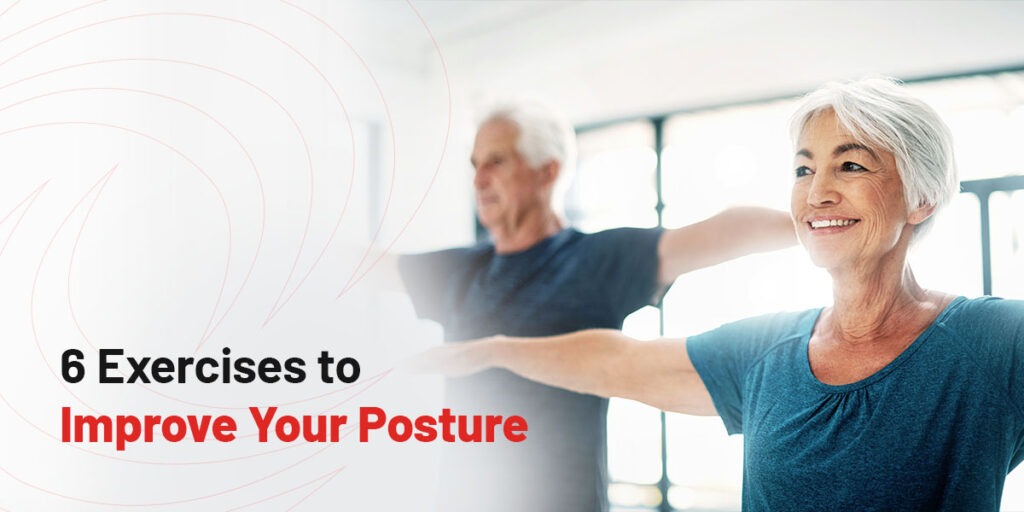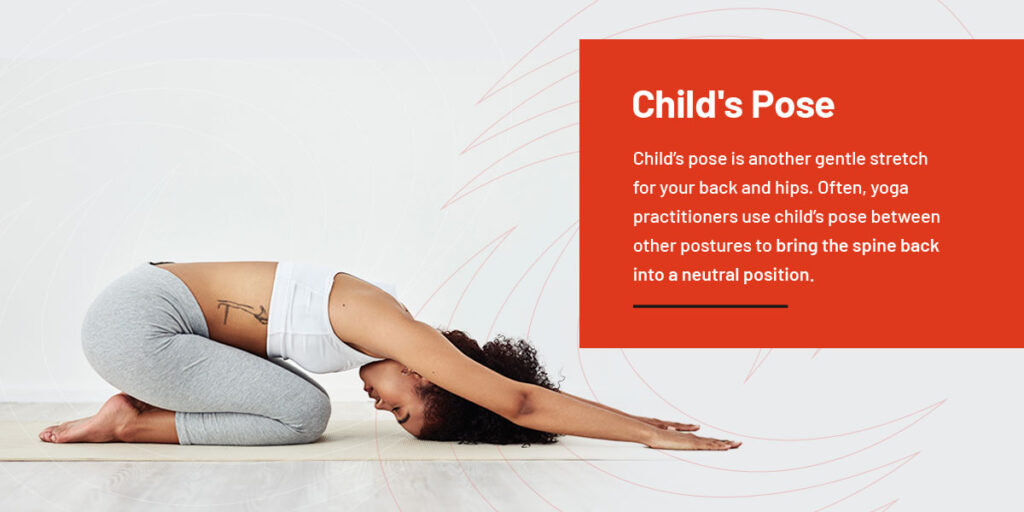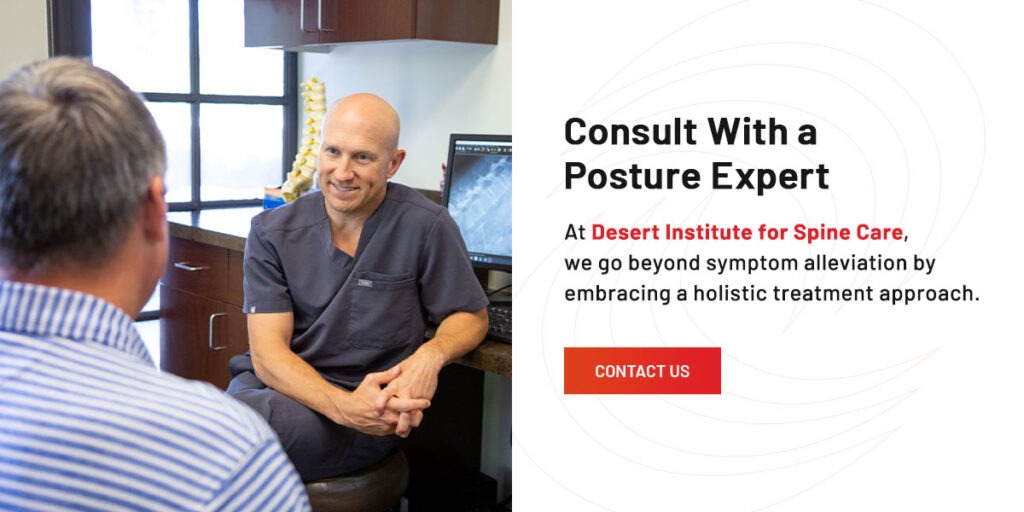
Kinesics is the expression of your body language. It’s the shrug of your shoulders, the quick wink to a friend, the unconscious puzzlement of your eyebrows when you can’t quite place a face. Your body evolves as you take on characteristics that define who you are. Your work and exercise routine will also have an impact, as those who sit at a desk all day can develop hunched shoulders and chronic pain from their sedentary jobs.
You might have picked up some bad habits over time, including bad posture. This article will list simple exercises you can do at home to put yourself on the right track to a better back.
Always check with a health professional before starting any new exercise regimen. They will ask questions to understand your medical background and advise you on a program that meets your needs.
Posture poses generally involve stretches and exercises around the shoulder blades and upper back. Try adding these six movements to your routine.
You can do this move when you are sitting or standing. Take a deep breath and slowly squeeze your shoulder blades together as if you are trying to hold a pencil between them. Exhale and hold for a few breaths, then gently release.
Try the shoulder blade squeeze 10 to 15 times daily, either as part of a warm-up or when you have a moment during work.
Go slowly and mindfully with neck exercises, as moving the area too quickly can cause potential long-term problems. The chin tuck starts with a long breath in. On the exhale, smoothly tuck your chin toward your chest while keeping your head straight. Hold for a few seconds, then release.
The cat-cow stretch, or chakravakasana, is a yoga position. In cat pose, you’ll arch your spine like a cat, and cow pose is the reverse. Start on all fours, with your hands under your shoulders and your back flat. Slowly move into the cow position by curving your lower back and raising your head.
Hold for a few seconds before returning to the neutral position. On an exhale, arch the other way and bring your chin toward your chest. Change this position into a strength exercise for posture by engaging your core muscles.
You use the thoracic part of your spine for sports like golf and baseball. If you imagine what happens to your spine and skeleton as you lunge your shoulder forward, you can get a good idea of the affected region of your body.
To stretch into this extension, sit down with your hands behind your head and your elbows pointing out. Gently arch your upper back and imagine someone gently tugging a thread between your chest and the ceiling. Hold for a few seconds, then release on an exhale.
Wall Pilates is approachable for people of all fitness levels, as you can do the exercises at home with little equipment. If you stand with your back toward the wall and your feet a few inches away, you are in the starting, neutral position. Bend your elbows at a 90-degree angle, keeping your arms against the wall. From there, slide your arms up the wall as high as you comfortably can. Maintain contact with the wall at all times. Slowly drop your arms down again.

Child’s pose is another gentle stretch for your back and hips. Often, yoga practitioners use child’s pose between other postures to bring the spine back into a neutral position.
Start by kneeling. From there, sit on your heels and drape your chest over your knees. Depending on what’s more comfortable for you, you can stretch your arms in front of you with your palms flat on the floor or bring your arms back alongside your thighs with your palms facing upward.
To maximize this pose, try to relax more into the floor with each exhale.
Many people develop bad posture over time from work or lifestyle choices. But occasionally, it might be from an underlying medical condition that requires a physical therapist’s intervention.
A physical therapist can create a personalized exercise program to target issues like muscle weakness and flexibility limitations. During their consultation, they will demonstrate how to do the prescribed movements based on your body type and ability.
Remember, you’ll need to consistently do the exercises your physical therapist recommends for maximum benefit. Your therapist will update your program as you progress and your body builds strength and flexibility.
Staying active is vital for maintaining balance, improving range of motion and reducing fall risk with age. However, older adults have different abilities than people in their 20s and 30s.
Here are some ideas for activities to improve your posture as you get older.

With these exercises and stretches to improve posture, you can take care of your spine and enjoy a pain-free and vibrant life. For those who experience spinal conditions such as herniated discs or degenerative disc disease, seeking a spine surgeon’s expertise will put you on the path to recovery.
At Desert Institute for Spine Care, we go beyond symptom alleviation by embracing a holistic treatment approach. We know people living with chronic pain have busy schedules, and we provide comprehensive care that addresses the root causes of spinal issues to restore your comfort. Contact us to schedule an appointment.